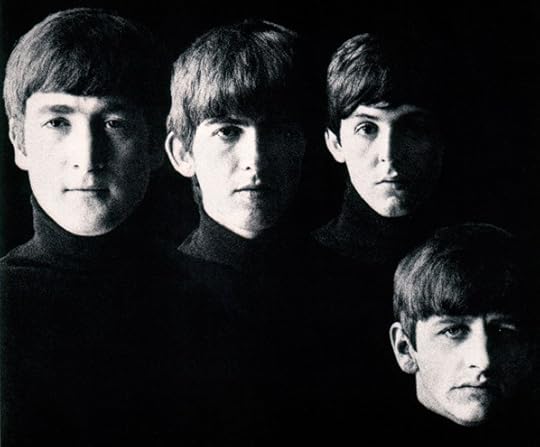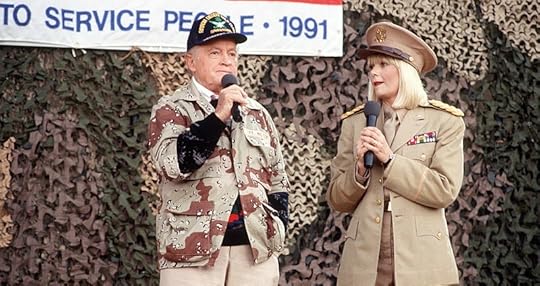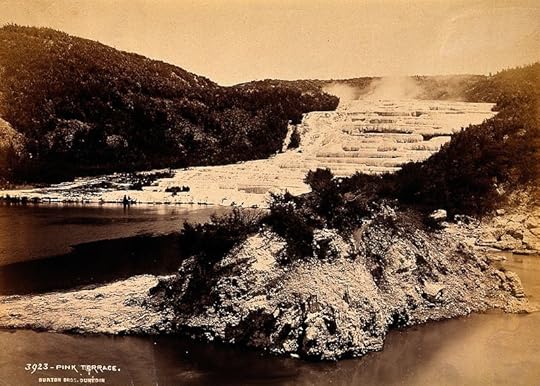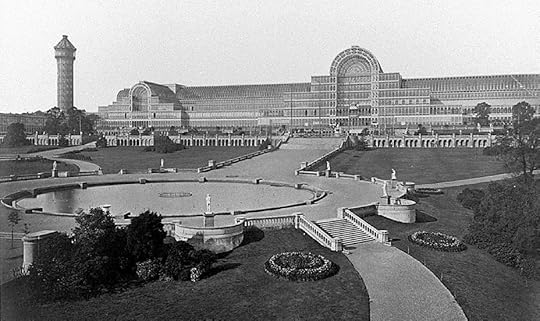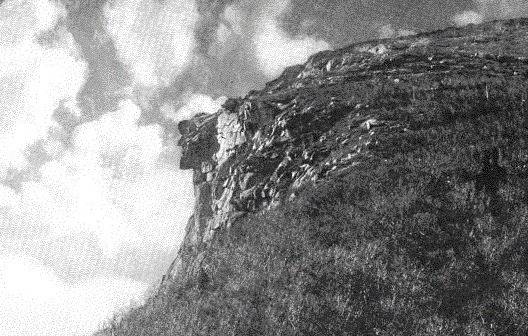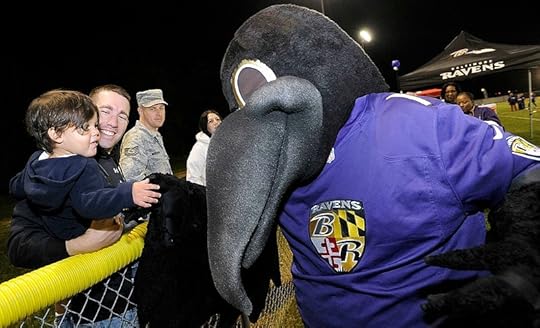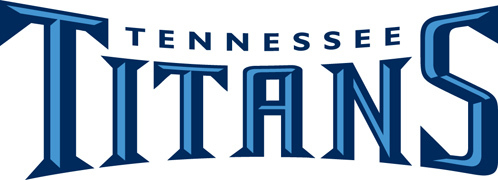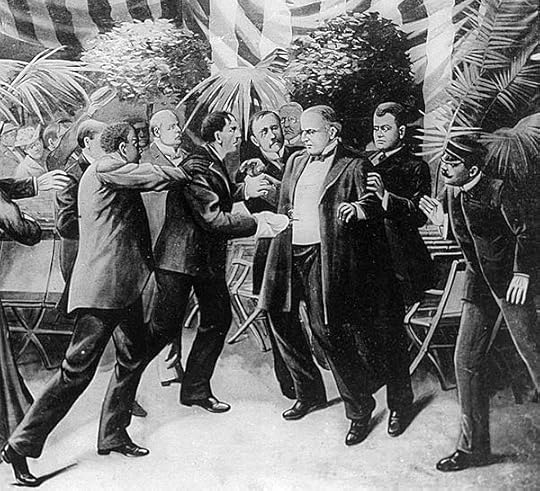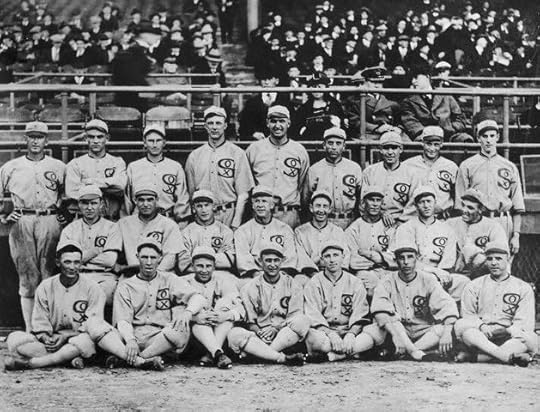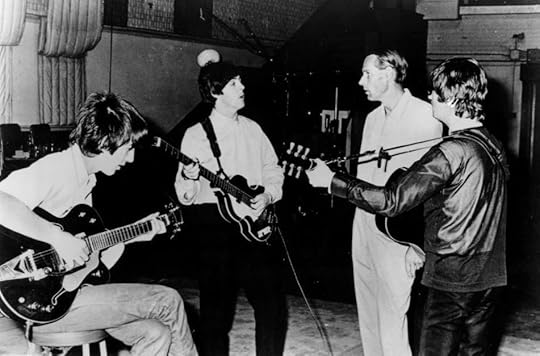Bathroom Readers' Institute's Blog, page 88
March 24, 2016
Random Trivia About Beatles Hits
Trivia you don’t know about the songs you definitely do know.
Penny Lane
The song described real locations in Liverpool. Or at least they were real—the street called Penny Lane is no longer there, although the barber, banker, and “shelter in the middle of the roundabout” still stand. The barber and banker are still a barber and banker; the shelter is now a coffee shop.
Eleanor Rigby
A statue of the song’s subject sits on a bench on Stanley Street in Liverpool. It was sculpted by Tommy Steele, a 1950s British rock star, who gave it to the city in 1982. Unlike the song’s Eleanor Rigby, each year several thousand people “come near” the statue, which is dedicated to “all the lonely people.”
Dear Prudence
John Lennon met Prudence Farrow—actress Mia Farrow’s sister—on a spiritual retreat with the Maharishi in India. She seemed very depressed when she arrived there, so Lennon wrote this song in an attempt to cheer her up. (She later said that she was neither sad nor despondent, just very deeply into meditation.)
Yellow Submarine
Paul McCartney intended it to be a children’s song, and wrote a spoken introduction to go along with it, but the idea of the intro was abandoned—no recording of it exists.
Because
The chord progression is Beethoven’s “Moonlight Sonata” played backward. Lennon got the idea after hearing Yoko Ono play the original piece on the piano. The unique vocal is the result of Lennon, McCartney, and Harrison singing in unison, then overdubbing the parts twice to create nine-part harmony.
Got to Get You Into My Life
In his autobiography, Many Years From Now, McCartney admitted who the song was about: nobody. It was actually about his need to smoke marijuana.
When I’m 64
Paul McCartney wrote this song when he was 15, then recorded it a decade later with the Beatles. It was about his hope that he would have someone to love him in his old age. In 2002 McCartney married former model Heather Mills. They split up in 2006…one month before McCartney’s 64th birthday.
Twist and Shout
The Beatles’ first concert ever held in a stadium was their show at Shea Stadium in August 1965. The first song they played: “Twist and Shout.” The Beatles’ version came from a 1962 recording by the Isley Brothers, but the Isleys didn’t originate it: a Philadelphia R&B group called the Top Notes did.
Something
John Lennon and Paul McCartney controlled the Beatles’ output—George Harrison wrote lots of songs with the group, but this was his only composition with the Beatles that was ever released as a single. It went to #1.
I Want to Hold Your Hand
The crowds of screaming girls during live performances were so loud that neither they nor the band could really hear the lyrics. So, when performing this song, Lennon would sing “I want to hold your gland,” meaning a breast.
Strawberry Fields Forever
When John Lennon was a boy in Liverpool, he liked to play in a garden called Strawberry Field on the grounds of a Salvation Army house. His Aunt Mimi didn’t want him playing there, though, because he was technically trespassing. She often warned him, “It’s nothing to get hung about.”
I Saw Her Standing There
Rights-holders wouldn’t allow Beatles songs to be used on American Idol until the series’ sixth season, but now a “Beatles week” is an annual feature. The first Fab Four song, performed on the 2007 finale, was “I Saw Her Standing There,” sung as a duet by Jordin Sparks and Blake Lewis.
I Am the Walrus
Some of the lyrics to this psychedelic song seem to be nonsensical—who is “the eggman,” for instance? Eric Burdon of the Animals claims that it’s him. Burdon says that Lennon nicknamed him “Eggman” after he told Lennon about an intimate encounter he’d once had that involved an egg.
The post Random Trivia About Beatles Hits appeared first on Trivia Books and Facts | Uncle John's Bathroom Reader.
March 21, 2016
You’re Never Too Old…
Because age is just a number.
At age 76:
Min Bahadur Sherchan successfully climbed Mount Everest in 2008. He’s the oldest person ever to do it.
At age 83:

Thomas Edison applied for his 1,093rd—and final—patent (1931). The invention: a holder for items being electroplated.
At age 84:
Eamon de Valera won a second term as Ireland’s president (1966), making him the oldest democratically elected head of state in history.
At age 86:
Doc Paskowitz, subject of the 2007 film Surfwise, still surfed every day.
Katherine Pelton swam the 200m butterfly in 3:01:14, beating the 85- to 89-year-old men’s record by more than 20 seconds (1992).
At age 87:
Mary Baker Eddy founded The Christian Science Monitor newspaper (1908).
Bob Hope entertained the troops, traveling with a USO show that went to Saudi Arabia in 1990 during Operation Desert Storm.
At age 88:
Michelangelo drew the architectural plans for Rome’s Santa Maria degli Angeli church (1563).
At age 89:

Betty White won the 2010 Screen Actors Guild award for comedy actress (Hot in Cleveland)…a year after winning SAG’s Lifetime Achievement Award.
At age 90:
Painter Marc Chagall became the first living artist to be exhibited at Paris’s Louvre museum (1977).
At age 92:
Dr. Paul Spangler of San Luis Obispo, California, ran his 14th marathon.
At age 93:
P.G. Wodehouse wrote his 96th book in 1975, the same year he was knighted.
At age 95:
A retired union organizer named Bernard Herzberg earned a Master of Arts in Refugee Studies at the University of East London (2005).
At age 102:
Alice Pollock published her memoir Portrait of My Victorian Youth (1971). It was her first book.
The post You’re Never Too Old… appeared first on Trivia Books and Facts | Uncle John's Bathroom Reader.
March 18, 2016
4 Pro Athletes Who Retired Early For Interesting Reasons
All of us regular people might have a hard time understanding why anyone would willingly walk away from a lucrative sports career in their prime. But they had their reasons.
1.
 First baseman Adam LaRoche played for six Major League Baseball teams for more than a decade. During the 2016 preseason, he suddenly announced his retirement, walking away from the Chicago White Sox and a $13 million salary. Why? According to LaRoche, team brass told him that he had to stop bringing his 13-year-old son, Drake, into the dugout for home games. (According to team brass, executives only asked him to bring Drake in a little less often.)
First baseman Adam LaRoche played for six Major League Baseball teams for more than a decade. During the 2016 preseason, he suddenly announced his retirement, walking away from the Chicago White Sox and a $13 million salary. Why? According to LaRoche, team brass told him that he had to stop bringing his 13-year-old son, Drake, into the dugout for home games. (According to team brass, executives only asked him to bring Drake in a little less often.)
2.
In the middle of the 2013 NFL season, 27-year-old Denver Broncos lineman John Moffitt quit football. After suffering from multiple injuries, chronic pain, and health problems, he felt that it was not worth it to “kill [himself] to be a millionaire.” He turned down a $750,000 contract extension and wasn’t on the roster when the Broncos went to the Super Bowl at the end of the season. (Well that didn’t last long. In 2015, Moffitt returned to the NFL, signing a one-year contract with the Philadelphia Eagles. He was cut from the roster before the season began.)
3.
By the time he was just 26, Swedish tennis superstar Bjorn Borg won Wimbledon five straight times and six French Opens. And then…he retired. He later told reporters that he woke up one day and realized he’d focused on tennis his entire life, to the detriment of learning about “other things in life.” He wanted to experience life before he got too old. His first post-tennis project: a fashion line.
4.
25-year-old Pat Tillman played safety for the Arizona Cardinals. Prior to the 2001 season he turned down a multimillion-dollar paycheck. That’s because also prior to the 2001 NFL season, the 9/11 attacks occurred. Tillman was inspired to quit football and enlist in the Army. Sadly, Tillman died in service in 2004. He was awarded a Silver Star and a Purple Heart.
The post 4 Pro Athletes Who Retired Early For Interesting Reasons appeared first on Trivia Books and Facts | Uncle John's Bathroom Reader.
Random Origins
Once again the BRI asks—and answers—the question: Where does all this stuff come from?
Telethons
After writer Damon Runyon died of cancer in 1946, his friends in the entertainment industry established the Damon Runyon Cancer Research Foundation. The charity held its first big fund-raiser in April 1949—an unprecedented 16-hour television broadcast to solicit donations. This “telethon” (“television” plus “marathon”) was the idea of NBC executive Sylvester Weaver, who thought big TV events would entice people to buy television sets. That first telethon wasn’t much different from today’s telethons: A big star hosted (Milton Berle); an on-screen bank of phone operators accepted call-in donations; and stars of movies, TV, and Broadway performed and pleaded for money. The broadcast raised $100,000 for cancer research.
Tree-Shaped Air Fresheners
In 1951 America was obsessed with cars, and many industries sprang up around the craze, from motels to drive-in movie theaters. A New York chemist named Julius Sämann figured that all that time spent in cars made them smell pretty bad, so in his garage-laboratory, he created the world’s first air freshener made just for the car. Made of a material similar to a disposable beer coaster, Sämann’s prototype was pine-scented, so he cut the freshener into the shape of a tree. Sämann got a patent and opened the Car-Freshener Corporation. Today, Little Trees are the top selling air fresheners in the world. And all of them are tree-shaped, even the top-selling “New Car Scent.”
Reader’s Digest
In 1914 DeWitt Wallace suffered injuries fighting in World War I and was sent to a French hospital to recover. He and other injured soldiers were incredibly bored and wanted something to read. That gave Wallace an idea: a pocket-size anthology of short articles on a variety of topics including information, entertainment, health, and humor, written in basic, easy-to-understand English. (Sound familiar?) When he got back to the United States after the war, he approached several publishers with his idea. They all rejected it. So in 1922, he printed 5,000 copies of his magazine himself. All 5,000 sold (at 25 cents each), and the popularity of Reader’s Digest grew quickly. By 1926, just four years after starting, the magazine had a circulation of 40,000. Today Reader’s Digest’s readership is 38 million people in more than 60 countries. 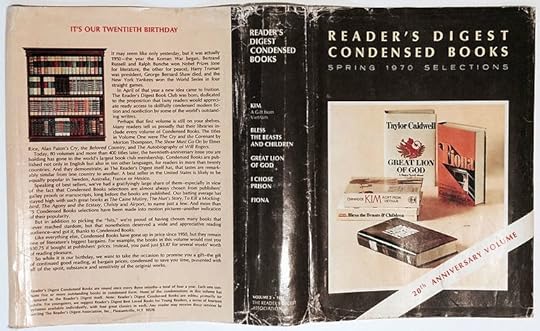
World Cup Soccer
Soccer was an Olympic event in the early 20th century, but only amateurs could compete. Professional players wanted to participate, but the Olympics said “no,” so FIFA, soccer’s governing body, began holding tournaments for professional players in the 1910s, and later organized the Olympic tournaments for amateurs as well. By the late 1920s, FIFA and the International Olympic Committee (IOC) were again in a dispute over whether professionals should be allowed into the Olympics. To make matters worse, the 1932 Olympics were scheduled to be held in Los Angeles, and soccer wasn’t popular in the United States. When the IOC announced that it planned to drop soccer from the Olympics, FIFA stepped in and organized its own world championship, open to professionals and amateurs. Dubbed the “World Cup” by FIFA president Jules Rimet, the inaugural 1930 tournament was won by Uruguay, the reigning Olympic champions. The event went on to become the most popular sporting event in the world: More than 1.2 billion people watched the 2006 World Cup final on TV.
The post Random Origins appeared first on Trivia Books and Facts | Uncle John's Bathroom Reader.
March 17, 2016
Lost Attractions
As a kid growing up in New Jersey, Uncle John often went to Palisades Amusement Park. Then one day they announced they were tearing it down to build an apartment complex. Many areas have an attraction like that—it’s an important part of the cultural landscape for decades…and then it’s gone.
 ATTRACTION: The Hippodrome
ATTRACTION: The HippodromeLOCATION: New York City
STORY: When it opened in 1905, it was called “the largest theater in the world.” With a seating capacity of 5,300, only the biggest acts—in both size and popularity—performed there: Harry Houdini, diving horses, the circus, 500-person choirs. But the daily upkeep for such a mammoth theater, coupled with the cost of staging huge shows, forced a change. In 1923 it became a vaudeville theater and then, in 1928, it was sold to RKO and turned into a movie theater. It then became an opera house. Then a sports arena. The Hippodrome was finally torn down in 1939.
WHAT’S THERE NOW: An office building and parking garage.
ATTRACTION: Pink and White Terraces
LOCATION: Lake Rotomahana, New Zealand
STORY: Called the eighth wonder of the world, the Terraces were once New Zealand’s most popular and famous tourist attraction. They were two naturally occurring “staircases” of silica shelves that looked like pink and white marble. Each terrace (they were two miles apart) was formed over thousands of years. Geysers spouted silica-laden hot water which flowed downhill and then crystallized into terraces as it cooled. But on June 10, 1886, a nearby volcano —Mount Tarawera—erupted, spewing lava, hot mud, and boulders. The eruption destroyed the village of Te Wairoa, killing 153 people, and the hot magma completely destroyed the terraces.
WHAT’S THERE NOW: Shapeless rock.
ATTRACTION: Crystal Palace
LOCATION: London, England
STORY: This massive 750,000 square foot structure originally housed the Great Exhibition of 1851, then was moved from Hyde Park to south London in 1854. Designed to evoke ancient Greek structures, the Crystal Palace featured dozens of columns, girders, and arches made of iron, and 900,000 square feet of glass. The building and surrounding grounds housed artwork and treasures from all over the world, including 250-foot-high fountains (requiring two water towers), gardens, and life-size replicas of dinosaurs. The coronation of King George V was held there, as was the annual English soccer championship. But after 1900, attendance started to dwindle. The Palace was closed on Sundays, the only day most Londoners had off from work. Then, in 1936, the Palace caught fire. The blaze was visible for miles. The building wasn’t properly insured, so there wasn’t enough to pay for rebuilding. All that was left were the water towers, later demolished during World War II out of fear Germany could use them to more easily locate London.
WHAT’S THERE NOW: A sports-arena complex.
ATTRACTION: Old Man of the Mountain
LOCATION: Cannon Mountain, New Hampshire
STORY: In 1805 surveyors Francis Whitcomb and Luke Brooks discovered this rock formation in the White Mountains of New Hampshire. Viewed from the correct angle, it had the appearance of a man’s face. It jutted out 1,200 feet above Profile Lake and was estimated to be 40 feet tall and 25 feet wide. Nineteenth-century politician Daniel Webster and novelist Nathaniel Hawthorne wrote about the Old Man and helped make it a state icon. The Old Man graces New Hampshire’s state quarter and a postage stamp. Signs of deterioration were first noted in 1906, and ever since, various methods—including cables and spikes—have been used to keep the face in place. But they didn’t work. In 2003, the Old Man finally collapsed and crumbled.
WHAT’S THERE NOW: A rocky cliff. Viewfinders looking at the former landmark superimpose an image of the Old Man when it was intact to show visitors what it looked like.
The post Lost Attractions appeared first on Trivia Books and Facts | Uncle John's Bathroom Reader.
21 Grand Irish Slang Terms For You to Dekko
Celebrate St. Patrick’s Day with these words and phrases straight out of the Emerald Isle.
Cat: Something terrible or annoying. Not that the Irish hate cats; it’s short for cat malojan, a Gaelic corruption of an old English phrase, “cat on a melodeon,” which is a type of organ. (Indeed, cat walking across an organ’s keyboard would be very annoying.)
Work away: The Irish equivalent of “carry on!”
Culchie. What in the United States we would call a country bumpkin.
Pup. A derisive term used by old people to describe over-confident young people.
The Pale: The greater Dublin metropolitan area.
Norn Orn: Northern Ireland.
Rugger hugger: A girl from a nice, upper-crust family who likes to date rough-and-tumble rugby players.
Gurrier: A hooligan or criminal.
Holy Joe: A self-righteous individual.
Dekko: Inspect.
Make a right hames. To ruin something. (To “make a bags of something” means the same thing.)
Waster: Someone who is utterly incompetent.
Grand. In American English, if someone asks how you’re doing or how something was, a generic, bland, proper response is “fine.” Similarly, in Ireland, a lot of people say “grand.”
Leg it. The act of running away very quickly
Bad dose. A very bad illness.
Donkey’s years: A very long period of time.
Earwinging: Eavesdropping.
Gaff: Home.
Black stuff: Guinness.
Jacks: The toilet.
Now you’re sucking diesel! “Now you understand what I mean!”
The post 21 Grand Irish Slang Terms For You to Dekko appeared first on Trivia Books and Facts | Uncle John's Bathroom Reader.
Football Team Name Origins
Every football team has a storied history. So do their names.
PITTSBURGH STEELERS
Originally named the Pirates after Pittsburgh’s professional baseball team, in 1940 owner Al Rooney renamed the team for the city’s steel industry.
HOUSTON TEXANS
The Dallas Texans were one of the original AFL teams. They moved to Kansas City in 1963, so when Houston got an expansion team in 2002, they revived the name.
BALTIMORE RAVENS
Selected by fans (via a telephone poll) from a list of 100 NFL-approved names. Baltimore was once the home of poet Edgar Allan Poe, author of “The Raven.”
KANSAS CITY CHIEFS
Dallas Texans owner Lamar Hunt was reluctant to relocate to Kansas City until Mayor H. Roe “Chief” Bartle promised to enlarge the city’s stadium and guarantee high season ticket sales. Hunt showed his appreciation by naming the team after him.
ATLANTA FALCONS
In 1965 the new team held a contest to name the franchise. A teacher from Griffin, Georgia, suggested Falcons: “The falcon is proud and dignified, with great courage and fight. It is deadly and has a great sporting tradition.”
MINNESOTA VIKINGS

General manager Bert Rose came up with the name as a nod to the area’s large Nordic population.
INDIANAPOLIS COLTS
Originated as the Baltimore Colts in 1947, the name recognizes Baltimore’s long tradition of horse breeding and racing.
SAN FRANCISCO 49ERS
The name is a reference to the gold rush prospectors who came west in 1849, the year after gold was discovered at Sutter’s Mill in the mountains east of San Francisco.
TENNESSEE TITANS
Formerly the Tennessee Oilers (after a move from Houston), owner Bud Adams picked the name from Greek mythology. He thought it was appropriate because the team played in Nashville, nicknamed “the Athens of the South.”
The post appeared first on Trivia Books and Facts | Uncle John's Bathroom Reader.
March 14, 2016
The Trial of the Century
With The People vs. O.J. Simpson currently airing, we’re reminded of how the televised criminal case against the popular football player and actor was labeled “the trial of the century.” Guess what else the media dubbed the “trial of the century”? Lots of other high profile trials. Here are a few.
On Sept. 6, 1901, a steel worker named Leon Czolgosz who had lost his job and become involved with the anarchist political movement, shot President William McKinley at the Pan-American Exposition in Buffalo. Czolgosz was quickly mobbed by a crowd and arrested; McKinley died eight days later. It would be the first presidential assassination trial of the 20th century (and the last). Czolgosz’s court-appointed lawyers had a hard time mounting a defense, due to the many eyewitnsses…and Czolgosz’s refusal to speak. The defense was more about keeping the defendant out of the electric chair; the prosecution put anarchy on trial, calling it out as a dangerous political movement (one that had, after all, led to a presidential assassination). Despite a plea of insanity, Czolgosz was found guilty after just an hour of jury deliberations. On Oct. 29, he was put to death in the electric chair.
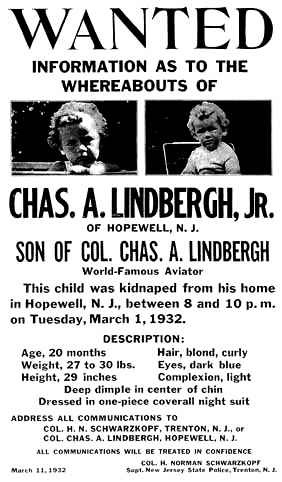 In 1932, Charles Lindbergh, Jr., the infant son of famed aviator Charles Lindbergh, was kidnapped. Two months later, the child was found, dead. It took police two years to find a suspect, an illegal German immigrant carpenter named Richard Hauptmann, who was found to be in possession of a gold certificate that had been used to pay the $50,000 ransom demand. His trial was also called the “Trial of the Century” due to the celebrity element and salacious nature of the crime. Hauptman was found guilty, and was sent to the electric chair in 1936.
In 1932, Charles Lindbergh, Jr., the infant son of famed aviator Charles Lindbergh, was kidnapped. Two months later, the child was found, dead. It took police two years to find a suspect, an illegal German immigrant carpenter named Richard Hauptmann, who was found to be in possession of a gold certificate that had been used to pay the $50,000 ransom demand. His trial was also called the “Trial of the Century” due to the celebrity element and salacious nature of the crime. Hauptman was found guilty, and was sent to the electric chair in 1936.
Even before the 1919 World Series started, there were rumors that some players on the Chicago White Sox had accepted money from gamblers to throw the games. After rumors of gambling and corruption faced many teams throughout the 1920 season, an investigation was convened. A grand jury was called for another “Trial of the Century.” This time, eight players (including two who confessed) from the White Sox were accused of fixing the World Series. However, the crime the players were tried for was “defrauding the public” and not “fixing games.” Essentially a technicality, the players were all found not guilty. However, in the baseball world, all eight were banned from baseball for the rest of their lives.
The post The Trial of the Century appeared first on Trivia Books and Facts | Uncle John's Bathroom Reader.
March 11, 2016
Olympic Bad Luck
Winning at sports takes skill, practice…and a little good luck. Here are some Olympians who could have used a rabbit’s foot (or some new officials).
Who’s Counting?
The 1932 Games in Los Angeles featured a 3,000-meter steeplechase for horses. The race was close as the horses entered the final lap…or what was supposed to be the final lap. Somehow, the judges had lost count and let the race run for an additional lap. American Joseph McCluskey would have won a silver medal, but was passed on that second “final” lap and only won the bronze.
Too Good For His Own Good
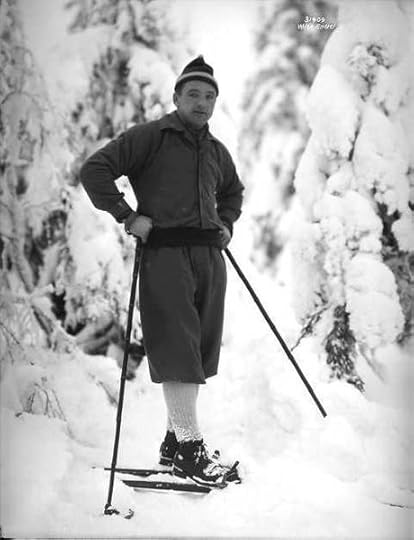 At the 1928 Winter Games in St. Moritz, Switzerland, Norwegian ski jumper Jacob Tullin Thams had such a strong jump—30 feet farther than the next competitor—that he flew beyond the sloped landing area and onto a flat surface, which made him crash. Penalized for style points, the longest jump of the day only earned him 28th place.
At the 1928 Winter Games in St. Moritz, Switzerland, Norwegian ski jumper Jacob Tullin Thams had such a strong jump—30 feet farther than the next competitor—that he flew beyond the sloped landing area and onto a flat surface, which made him crash. Penalized for style points, the longest jump of the day only earned him 28th place.
Watch This!
At the 1932 Summer Games in Los Angeles, Frenchman Jules Noël’s discus throw went farther than anyone else’s, but distracted officials were busy watching the pole vault competition. Result: The throw was “unofficial.” They apologized and let him throw again, but it fell short of the previous mark. Noël ended up in fourth place—just short of a medal.
A Horse Too Short
Olympic gymnasts know that the “horse” in the women’s vaulting competition is supposed to be set at 125 centimeters (about four feet) off the floor, and that’s what they practice on. But the people who installed the horse at the 2000 Games in Sydney, Australia, set it at 120 centimeters—5 centimeters (about 2 inches) too short. Several gymnasts misjudged the height and fell, including the favorite, Russia’s Svetlana Khorkina, who missed her landing and was so shaken that later she also fell off the uneven bars.
The post Olympic Bad Luck appeared first on Trivia Books and Facts | Uncle John's Bathroom Reader.
The Other Works of George Martin
George Martin passed away this week at age 90. He was best known for producing, arranging, and developing the sound of the Beatles. But his career lasted decades and he worked with dozens of acts. Here are some of the most unlikely.
Peter Ustinov, “Mock Mozart” (1952)
After graduating college and a brief stint at the BBC, Martin joined the small Parlophone Records in 1950 as an assistant to the director, Oscar Preuss. Preuss allowed Martin to produce novelty records, including “Mock Mozart,” a classical music parody by serious British actor Peter Ustinov (featuring an appearance by 15-year-old Anthony Hopkins on the harpsichord).
George Martin Instrumentally Salutes the Beatle Girls (1966)
Martin, who arranged and created the orchestrations for Beatles songs, conducts a small orchestra who plays Beatles hits in a classical, instrumental style. All of the songs chosen are directly or indirectly about women in Beatles songs, such as “Eleanor Rigby,” “Michelle,” and “Girl.” (There’s also a version of “Yellow Submarine” for some reason.)
Yoshiki, Eternal Melody (1993)
X Japan was a popular Japanese heavy metal band…until lead singer Yoshiki released a solo album called Eternal Melody in 1993. Produced by Martin, it’s orchestral versions of X Japan’s songs.
In My Life (1998)
Only George Martin can do justice to Beatles songs arranged and produced by George Martin. That’s the concept behind this collection of Beatles covers. The singers? Not quite as much justice. Tracks include Sean Connery singing “In My Life,” comedian Billy Connolly on “Being for the Benefit of Mr. Kite,” and Jim Carrey doing “I Am the Walrus.”
The post The Other Works of George Martin appeared first on Trivia Books and Facts | Uncle John's Bathroom Reader.

